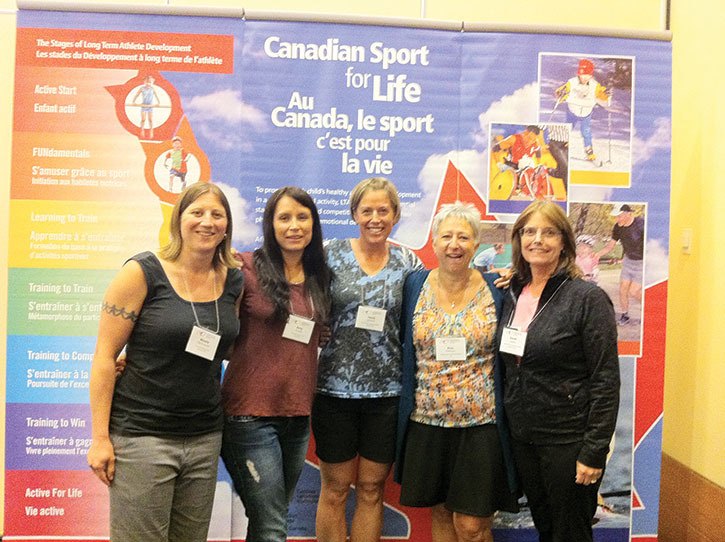A group of Kootenay residents recently attended a conference on physical literacy and are now more charged up than ever to help kids get active in what they see as the right way.
Nakusp kinesiologist, Kootenay Sufferfest Society president and PacificSport Columbia Basin (an athletics focused Columbia Basin non profit organization) representative Janis Neufeld, College of the Rockies East Kootenay teacher education program representative Sandi Lavery, Trail Gymnastic club representatives Amy Shields and Nicola Marynowski, and Nelson Regional Sports Council executive director Kim Palfenier were at the International Physical Literacy Conference in Vancouver earlier this June where more than 400 Canadians gathered to discuss what exactly physical literacy is and how it can be better incorporated by communities, schools, clubs and recreation organizations.
“It’s a hard thing to define, but for me, I think of it (physical literacy) as the A-B-Cs of movement. The basic foundation that is common to virtually all sports and activities,” said Mrs. Neufeld. “I’ve spent my whole life trying to get people fit and active. And now, there’s a lot of new research coming out, and what they’re finding is if kids have exposure to a broad range of activity they actually do much better than if they specify in one sport at a young age. This is really important.”
The idea of physical literacy — and of giving kids a little bit of every activity (or even unstructured activity) rather than specializing in certain activities (such attending week-long hockey camps or joining soccer teams) at a young age — runs counter to how many parents have introduced their kids to sports for decades, and incorporating such changes into physical education classes at schools could be a big change, but one Mrs. Neufeld says is worth making.
“I really want to see schools and physical education teachers adopt this more and not have it be, ‘Okay this week we’ll be playing volleyball, and here’s how to do a volleyball serve and here’s how to return the serve’ and instead have it less structured and maybe more fun for the kids,” she said. “I grew up with the old way, pick one sport and then practice, practice. For me that was swimming. So I never really learned how to throw a ball because I was so busy swimming. And, since kids are generally shy about what they’re not good at, I stayed away from sports that required me to throw a ball. And so I’m only now finally learning to throw a ball as an adult. Which is kind of ridiculous, considering how I’m a pretty active person.”
Mrs. Neufeld told The Echo that increasing physical literacy doesn’t mean never specializing in a sport, but that in her opinion, it’s better to save that until kids are high school age.
“So if you’re really young and you love soccer that’s great, but instead of doing soccer camp after soccer camp after soccer camp, let’s get you doing some soccer, but also get you on the cross country running team, and into parkour and gymnastics. Then when you get to high school and you want to get into soccer in a big way, you’ll have such a great overall athletic foundation, not just a great set of soccer skills,” she said.
Kootenay region residents are particularly well-placed to put physical literacy into action, given the wide range of activities available throughout the changing season (nordic and downhill skiing or ice skating in winter, biking and standup paddling boarding in the summer, and so on), according to Mrs. Neufeld.
“We have such a great environment, let’s use that environment,” she said. “It’s okay to live in small communities where your kids don’t have access to the highest levels of training for every single sport. In fact, it’s a good thing, since it encourages kids to get out and try a lot of different things.”
Mrs. Neufeld said the next step for the conference attendees is to encourage their communities, schools, clubs and recreation organizations to adopt the principles and methodology of physical literacy, and to try to influence decision makers in health, education and sport to adopt and embrace physical literacy.
